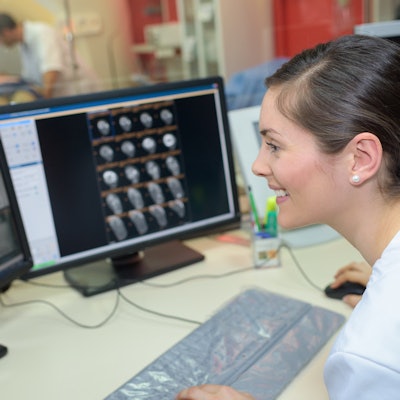
The U.K. Royal College of Radiologists (RCR) has updated its guidance for the calibration and required resolution for imaging display devices. The new version, Picture archiving and communication systems (PACS) and guidelines on diagnostic display devices, third edition, also includes mobile devices for the first time.
Produced by the RCR Radiology Informatics Committee, the guidance outlines the specific requirements for diagnostic display devices depending on if they are used for primary diagnosis, clinical review, or mobile review of radiology devices. It supersedes the RCR's previous guidance, Picture archiving and communication systems and quality assurance, second edition, which has now been withdrawn.
In the new document, the RCR offers seven key recommendations:
- Primary diagnostic workstations should be equipped with a reliable display with at least 3-megapixel (MP) resolution, a luminance range of at least 1-350 candelas per square meter (cd/m2), which is regularly hardware-calibrated such that it remains within 10% of the DICOM grayscale standard display function (GSDF) standard.
- Clinical review displays should be at least 2-MP resolution with a luminance range of 0.8-250 cd/m2 and should be calibrated at least once a year to remain within 20% of the DICOM GSDF. Either hardware or perceptual calibration (using the Task Group 18 test pattern) may be used.
- Mobile device displays should mainly be used in the absence of a primary diagnostic display. They should conform to the same standard as clinical review displays.
- When color displays are used in radiology, they should still meet the grayscale calibration requirements for the given setting. The consistent use of the standard red green blue (sRGB) color space is recommended to achieve uniformity across workplaces.
- Mammography is regarded as a specialist imaging situation requiring a higher resolution and brighter display unit.
- The viewing environment should be strictly controlled in the primary diagnostic setting. For clinical review, the environment should be controlled as best achievable.
- If consumer off-the-shelf displays are chosen, a workplace must also operate and document a regular quality-control and calibration program.
The full guidance can be found on the RCR's website.



















